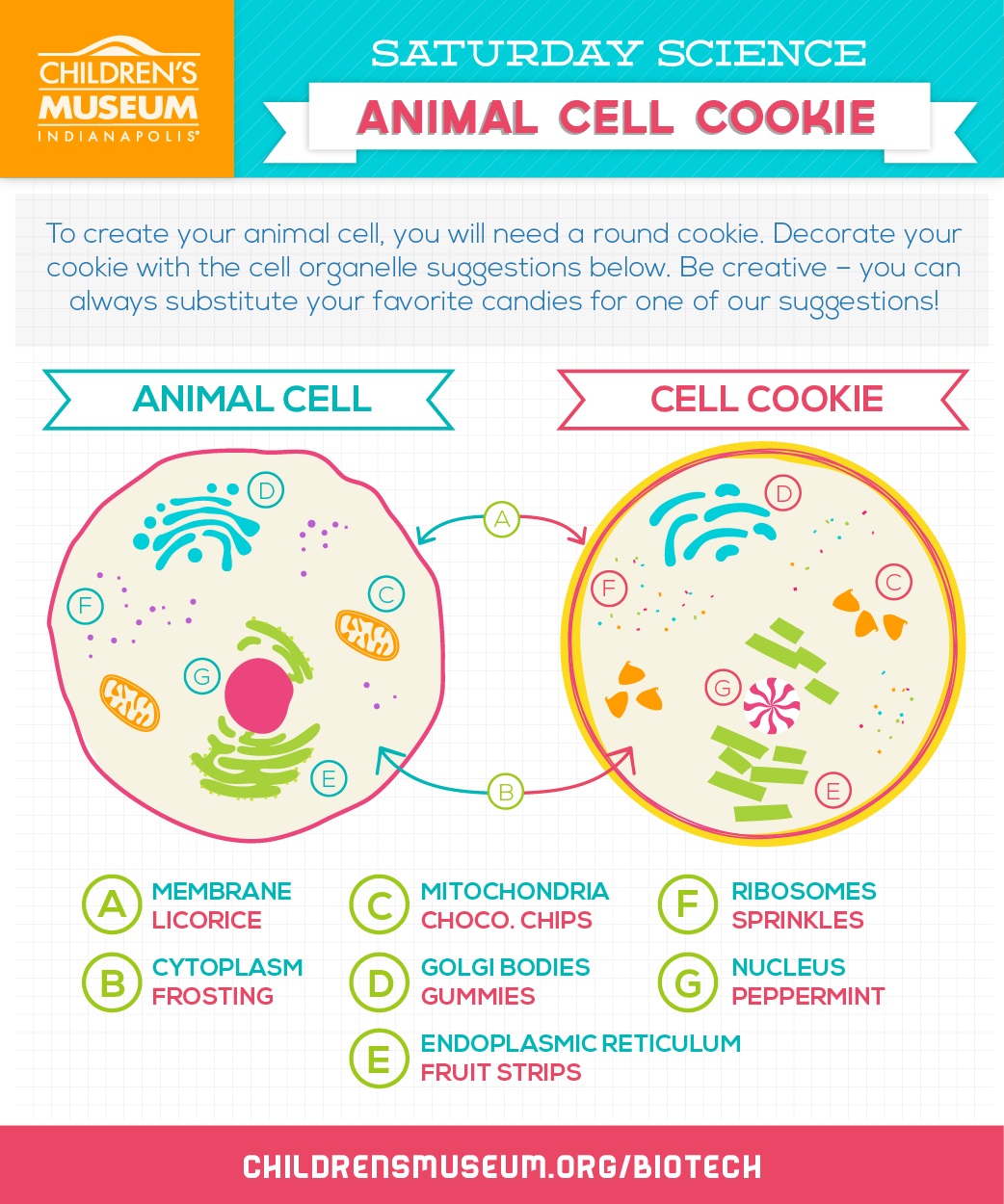
You know what? Food is delicious. And cookies may be the most delicious food of all. (No, I am not Cookie Monster, though he is one of my heroes). Usually, cookies are a taste explosion, not a learning experience, but today we’re going to make a cookie that’s a bit different. It’s going to be a science cookie, and you’re going to add toppings to turn it from a cookie into a delicious edible version of an animal cell, kind of like the tiny little cells that you are made of. Each topping represents an organelle, one of the even tinier parts of a cell. All organelles have a job to do to keep a cell alive and functioning and to help it do its major job: making proteins for your body.
Materials
- Round cookie such as a sugar cookie or gingerbread cookie
- Frosting
- Licorice
- Jelly Beans
- Sprinkles
- Fruit leather (like Fruit roll-ups)
- Small candies such as chocolate chips or smarties
- Round candy such as a peppermint patty or chocolate kiss
Process
Organelles and suggested candy
- Membrane: Every cell has a membrane, which acts as a skin, letting good things in and keeping bad things out. The membrane is made of fats, or lipids, and proteins. Place a strip of licorice around the edge of your cookie for the cell membrane.
- Cytoplasm: The cytoplasm is the jelly that surrounds all the organelles in the cell. Frost your cookie to represent the cytoplasm.
- Mitochondria: Mitochondria are often called the “powerhouse” of the cell. These organelles have their own circular DNA and are the site of aerobic respiration, which produces ATP, the energy your cell needs to survive. These are found throughout the cell. Chocolate chips can represent the mitochondria is the cell.
- Golgi Bodies: Golgi bodies are a series of stacked sacs that process and package the lipids and proteins made in the cell. Try jelly beans or gummies. They are often depicted near the nucleus, but can be anywhere in the cell.
- Endoplasmic Reticulum: Or ER, is a series of tubes that carry the lipids and proteins to the cell membrane. They can be rough or smooth. Rough ER has ribosomes on it, and makes proteins and sends them to the golgi bodies for packaging. Tear strips of fruit leather and make tubes. Make a smooth (without ribosomes) and a rough (with ribosomes).
- Ribosomes: Ribosomes are like little factories that make proteins for the cell. Ribosomes can be found either free in the cell, or on the rough endoplasmic reticulum. Use something small but colorful to represent ribosomes such as sprinkles or colored sugars. To put your ribosomes in, sprinkle a few around the cell and push them to set them in.
- Nucleus: The nucleus is the “control center” for the cell. The nucleus contains the chromosomes, which are made of DNA. DNA is the instruction manual for the cell to make everything the body needs. In most animal cells, the nucleus is near the center. Use something large and round, such as a peppermint.
The science doesn't stop here! Check out the Corteva Agriscience ScienceWorks exhibit to learn about portion control and where your food comes from!

 (
(











